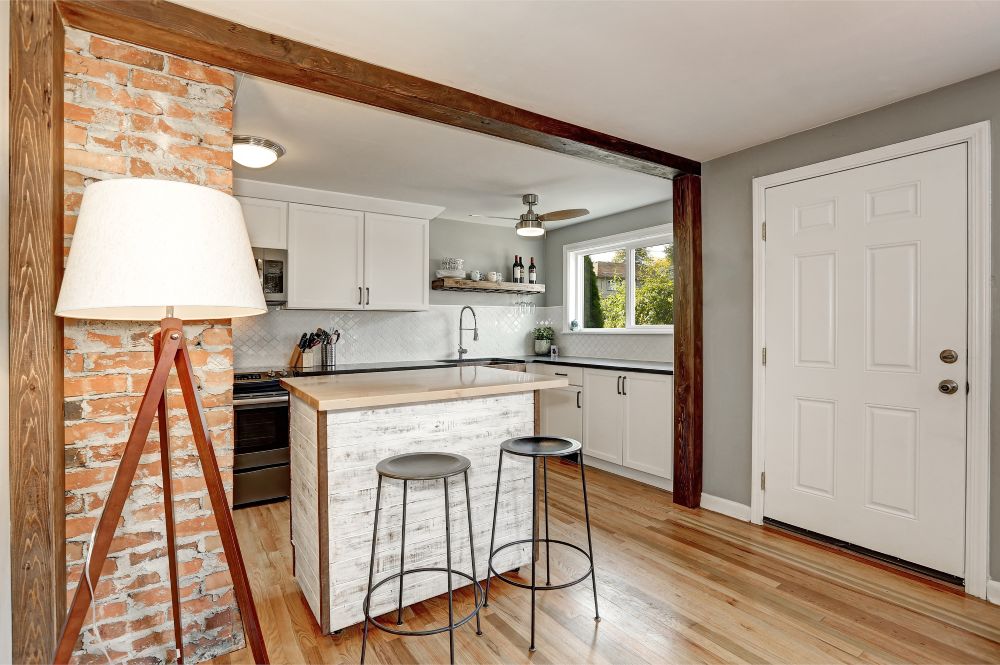A fun, friendly, and surprisingly delightful guide for property owners
When you rent out a property, you probably expect the usual responsibilities: collecting rent, scheduling maintenance, maybe reminding a tenant once or twice that a garbage disposal is not a substitute for a compost bin. But utilities? Ah, utilities are the unsung beasts of the rental world. Quiet… until they’re not.
One confusing handoff, one “I thought YOU were paying that bill,” or one burst pipe thanks to a heat pump shut-off, and suddenly utilities are more dramatic than a Friday-night reality TV reunion.
So let’s take the mystery out of it. Utility management doesn’t have to be messy, stressful, or expensive. In fact, with a solid system—and a few smart best practices—you can keep everything running smoothly while protecting your property and your bottom line.
Today, let’s talk about how to handle utilities like a seasoned property pro.
1. The Golden Rule: It Is Always Best for Tenants to Pay All Utilities
This is the hill most experienced landlords will happily die on.
Here’s why:
✔ Tenants become responsible for what they consume
The moment utilities are in the tenant’s name, a magical shift happens. Lights start getting turned off. Showers get shorter. Thermostats stay within reasonable ranges. Gone are the 45-minute steamy concerts in the bathroom—unless they want to pay for them.
✔ Utility usage stays fair
No more guessing games. No more splitting costs or debating what portion is “reasonable.”
If tenants use it, they pay for it. Simple. Clean. Drama-free.
✔ Owners avoid surprise bills
When owners cover utilities, usage can balloon in ways you wouldn’t believe. We’re talking:
- Keeping windows open while the heat runs
- Running small appliances 24/7
- Turning the AC into a personal arctic tundra
- “Borrowing” water for recreational kiddie pools
When tenants pay, those issues dissolve almost overnight.
✔ It prevents wastefulness
People tend to treat what they pay for very differently than what someone else is footing the bill for. That’s just human nature—and utility bills prove it every month.
Let the tenant be the one to learn the life lesson from the electric company—not you.
2. Make Utility Responsibilities Crystal Clear in the Lease
Utilities can become a headache if expectations are fuzzy. Solve this upfront by making your lease the utility bible.
Include:
- Which utilities the tenant must set up
- When they must set them up (usually before move-in)
- What happens if they don’t (fees, back billing, no keys, etc.)
- Instructions/expectations for shared utilities, when applicable
- Rules about tampering, turning off services, or bypassing systems
The more detailed your lease, the fewer disputes later. Think of the lease as your future self’s best friend—your future self will thank you.
3. Use a “Landlord Revert” to Prevent Gaps
Even when tenants pay everything, there’s one loophole you want to avoid: a gap between the old tenant turning off utilities and the new tenant setting them up.
That gap can cause:
- Frozen pipes
- Mold or humidity issues
- HVAC damage
- A miserable move-in experience
- Appliance failures
- Flooding (yep, sump pumps need electricity!)
The solution:
A landlord revert agreement with each utility provider.
When a tenant cancels, service automatically returns to you temporarily so nothing shuts off.
This protects your property and keeps things running until the next tenant takes over.
We’ve yet to find a professional painter that can do a good job, in the dark…
4. Require Proof of Utility Setup Before Move-In
This one rule can save you dozens of headaches: Get Proof!
If they transferred services, the tenants should be able to provide:
- Account numbers
- Service start dates
- Confirmation emails or screenshots
It’s simple accountability. It prevents excuses, delays, and surprise utility gaps. Property managers do this religiously for a reason—it works. And set cut-off dates during the transition is great motivation.
5. Keep a Master List of All Utility Providers
Make life easier (for you and your tenant) by keeping a single document with:
- Electric provider
- Gas provider
- Water/Sewer company
- Trash collection details
- Internet options
- Meter locations
- Emergency outage numbers
Include this with your welcome packet, and you’ll instantly look like the most organized landlord on the planet.
6. Conduct a Utility-Check Walkthrough During Move-In and Move-Out
This doesn’t need to be complicated—just a quick look at:
- Thermostat settings
- Water pressure
- Hot water temperature
- Sump pump activity
- Running toilets
- Leaks or drips
- Appliance functionality
Snap a picture of the meter readings, too.
This protects both parties and gives you a baseline if a tenant tries to dispute something later.
7. If Your Property Isn’t Separately Metered
Not every rental comes with perfectly divided utilities, especially:
- Basements
- Accessory dwelling units
- Multi-unit conversions
- Some condos
- Older row homes
If you can't individually meter utilities, you still have options:
✔ Factor estimated usage into the monthly rental price
Flat-rate billing isn’t uncommon—as long as you base it on actual usage, not guesswork.
✔ Upgrade when possible
Even adding a submeter for water or electric can give you leverage and transparency long-term.
8. Watch for Red Flags That Mean Utility Trouble
Even when tenants pay everything, utility problems can still affect your bottom line if left unchecked.
Watch for:
- Damp or musty smells
- Higher-than-normal humidity
- Hot or cold rooms
- Unexpected noises from HVAC
- Weak water pressure
- A tenant casually telling you their water bill doubled
Utility spikes often reveal underlying issues like leaks, failing appliances, or ventilation problems.
A quick check now can prevent a four-figure repair later.
9. Seasonal Utility Planning Protects Your Property
A smart owner handles utilities differently depending on the season.
Winter:
- Ensure heat never drops too low
- Check insulation
- Insulate outdoor spigots
- Verify tenants understand freeze-risk rooms
Summer:
- Clean HVAC coils
- Replace filters
- Inspect attics and vents
Spring/Fall:
- Check sump pumps
- Evaluate exterior water lines
- Clean gutters
- Ensure thermostats run efficiently
Utilities can make or break the long-term health of a property—so seasonal upkeep is key.
10. Staying Hands-Off vs. Staying In-The-Know
Even when tenants pay all utilities, owners should still:
- Know their providers
- Track maintenance that affects utilities
- Glance at water bills if they’re part of an HOA
- Respond quickly to leaks or heating issues
- Confirm utilities are set up correctly
You want to be hands-off—but not blind.
The goal is balance: let tenants be responsible for what they use, while you stay aware enough to prevent damage, waste, or long-term issues.
11. A Well-Managed Utility System Creates Happier Tenants (and Happier Owners)
When utilities are clear, organized, and tenant-paid:
- Move-ins go smoothly
- Tenants feel informed
- Bills stay fair
- You avoid surprise expenses
- The property stays well-maintained
- Everyone knows exactly what to expect
The truth is simple:
Clear utility systems create predictable rental experiences. Predictable rental experiences create stable tenancies.
It’s a win-win all around.
Final Thought
Managing utilities may not be glamorous, but it is one of the smartest ways to protect your rental property—and your wallet. The best approach? Put the responsibility in the tenant’s hands. It keeps costs fair, prevents wastefulness, and makes expectations clear from day one.
And when you decide you'd rather have a professional handle the coordination, documentation, and tenant communication that comes with rental ownership, a property manager can take it all off your plate.
Call Conrad today at 202.803.7200 to learn how our expert team can take care of all your property management needs!


